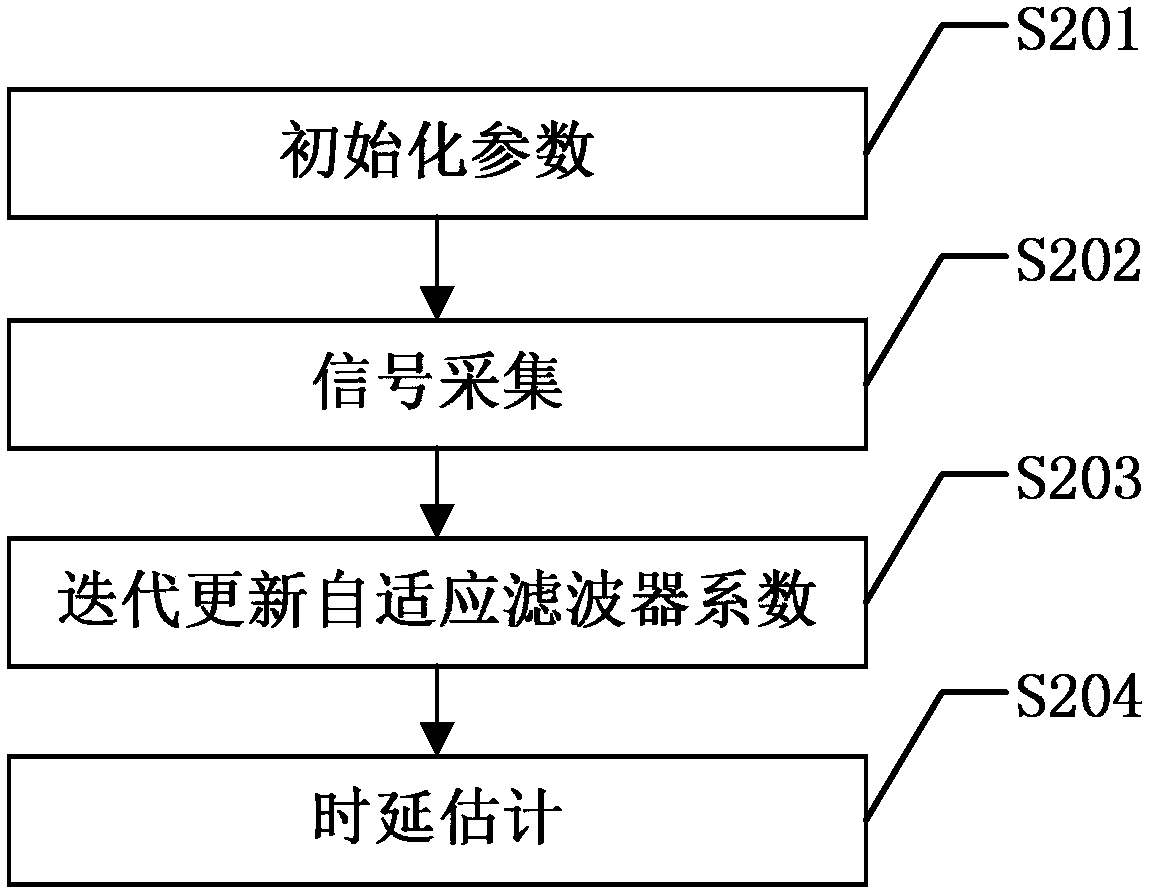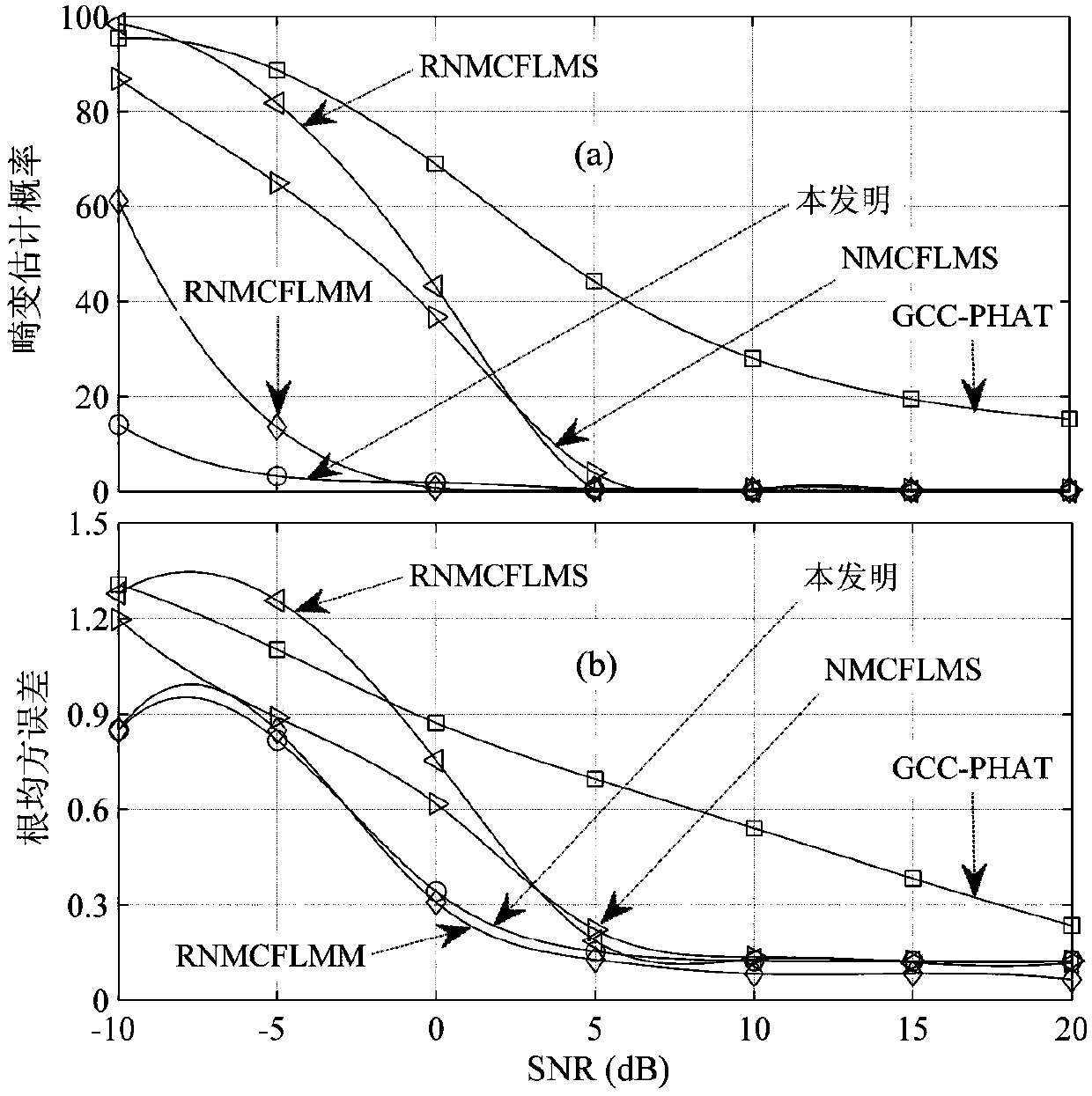A Multi-Channel Delay Estimation Method Based on Robust Adaptive Blind System Identification
A robust self-adaptive and time-delay estimation technology, applied in radio wave measurement systems, measurement devices, instruments, etc., can solve the problems of non-stationary speech and adverse effects on the accuracy of time-delay estimation of colored characteristics
- Summary
- Abstract
- Description
- Claims
- Application Information
AI Technical Summary
Problems solved by technology
Method used
Image
Examples
Embodiment
[0216]In order to illustrate the technical effect of the present invention, a specific example is adopted to carry out experimental verification of the present invention, and its experimental effect is compared with four kinds of contrast algorithms, and four kinds of contrast algorithms are respectively: classic generalized cross-correlation-phase transformation method (GCC -PHAT) (see literature "Y.Huang, J.Benesty, and J.Chen, Acoustic MIMO Signal Processing. Berlin, Germany: Springer, 2006."), normalized multi-channel frequency-domain LMS algorithm (NMCFLMS) (see literature “J.Chen, Y.Huang, and J.Benesty, “An adaptive blind SIMO identification approach to joint multichannel time delay estimation,” in Proc.IEEEInt.Conf.Acoust., Speech, Signal Process.(ICASSP), 2004, pp .IV-53–IV-56."), Robust Normalized Multichannel Frequency-Domain LMS Algorithm (RNMCFLMS) (see literature "M.A.Haque and M.K.Hasan, "Noiserobust multichannel frequency-domain LMS algorithms for blind channel ...
PUM
 Login to View More
Login to View More Abstract
Description
Claims
Application Information
 Login to View More
Login to View More - R&D
- Intellectual Property
- Life Sciences
- Materials
- Tech Scout
- Unparalleled Data Quality
- Higher Quality Content
- 60% Fewer Hallucinations
Browse by: Latest US Patents, China's latest patents, Technical Efficacy Thesaurus, Application Domain, Technology Topic, Popular Technical Reports.
© 2025 PatSnap. All rights reserved.Legal|Privacy policy|Modern Slavery Act Transparency Statement|Sitemap|About US| Contact US: help@patsnap.com



